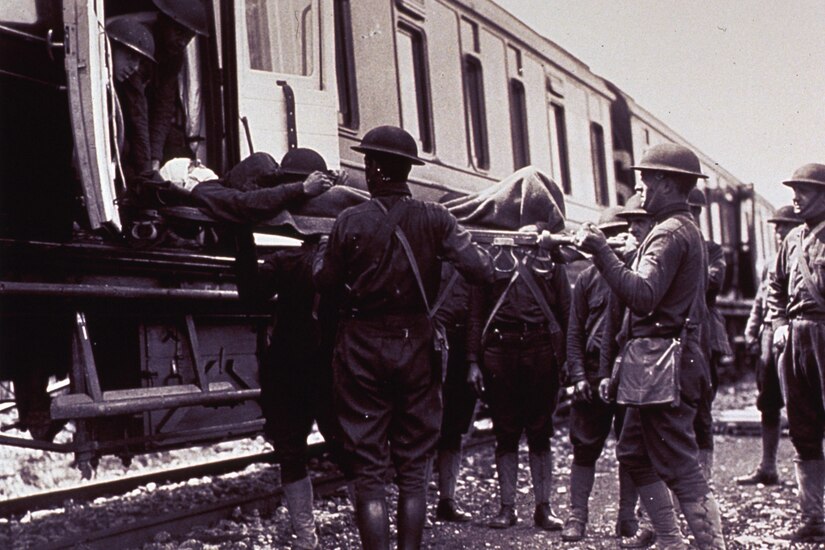May 1, 2020 | BY David Vergun , DOD News
Air Mobility Command aircrew and medical personnel conducted
the first operational use of the Transport Isolation System to perform an
aeromedical evacuation of three U.S. government contractors who tested positive
for COVID-19, the coronavirus disease, from Afghanistan to Ramstein Air Base,
Germany.
Upon arrival April 10 at Ramstein, the patients were
transferred to Landstuhl Regional Medical Center for treatment.
The mission marked the first operational use of the TIS
since its development during the 2014 Ebola outbreak in West Africa, and the
first movement of COVID-19 positive patients aboard Air Force aircraft. The TIS
is an infectious disease containment unit designed to minimize risk to aircrew,
medical attendants and the airframe, while allowing medical care to be provided
to patients in-flight.
The Defense Department has a long and storied history of
medical transport service developments.
Up until the Civil War, horse-drawn wagons called
ambulances, were the most advanced way to move sick or wounded soldiers to
hospitals or field treatment stations.
Although horse-drawn wagons continued to be used up until
World War I, the Civil War ushered in the first ambulance trains in the U.S.
The first ambulance trains were used a few years earlier for the first time
during the Crimean War.
These Civil War ambulance trains were converted boxcars or
passenger trains. Some of the more advanced ones had rubber slings to hold
litters to minimize shock from vibrations. Some also had a medical staff,
dressing station and even kitchens.
Also during the Civil War, the first hospital steamships
were used to transport casualties. They were especially useful in the western
theater on the Mississippi River and its tributaries and they were also used on
the Atlantic Seaboard as well, along with sailing vessels.
The Union Army and the Navy each had their own fleet. The
Confederate States also had a few hospital ships, some of which doubled as
blockade runners.
Ships and railroads continued to play a major role in the
transport of the sick and wounded, particularly during World Wars I and II.
Hospital trains were also used during the Korean War,
1950-1953, both in Korea and in the U.S. The Army discarded its last hospital
trains in the 1970s.
The Navy still has two hospital ships, the USNS Comfort and
Mercy. Both have been used in the fight against COVID-19.
Following the use of steamships and trains as patient
delivery modes, the next big development took place during World War I, when
trucks went into ambulance service.
Although the first instances of airplanes being used as
ambulances was during World War I, those instances were extremely rare. During
World War II airplanes were used by the U.S. Army for medical evacuation much
more frequently.
The introduction of helicopters to evacuate the wounded
during the Korean War made it possible to quickly extract casualties from the
battlefield to the point of care. In Vietnam, this trend accelerated with
excellent results. Today, helicopters are still used by DOD to evacuate the ill
and wounded.







No comments:
Post a Comment